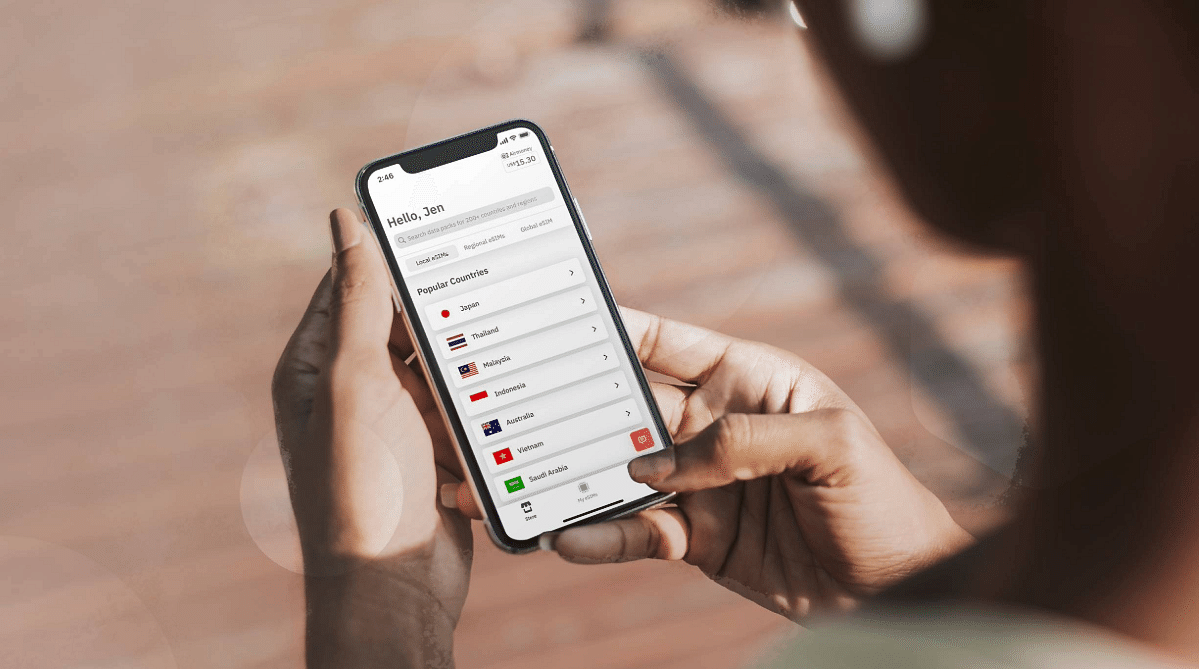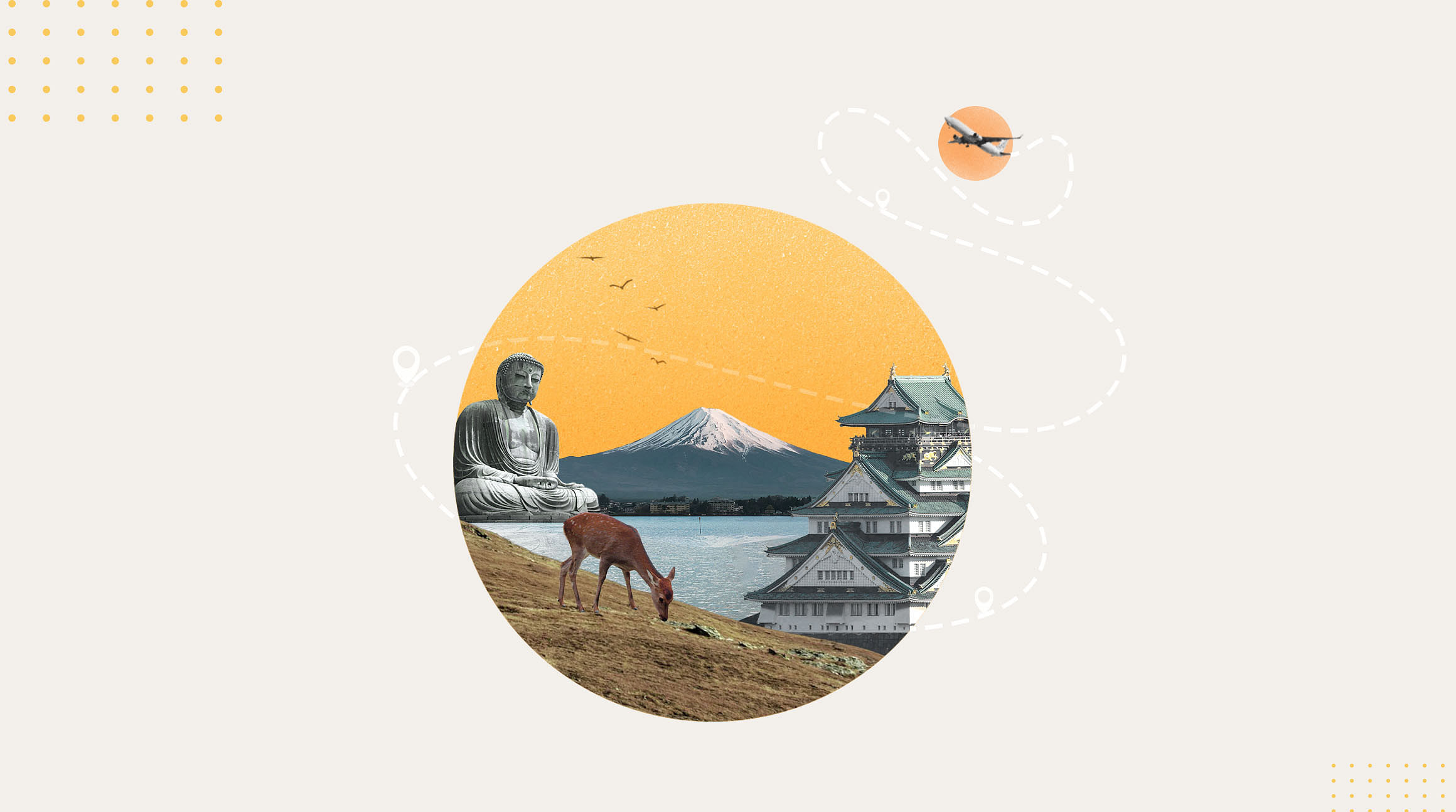
We have the ultimate itinerary for travelers planning a trip to Japan. Use our helpful guide to experience the best that Japan has to offer, from the neon-lit streets of Tokyo to the historic charm of Kyoto, and beyond. With ample opportunities to experience Japan's unique cultural heritage, history, and delectable cuisine, you'll want to keep coming back for more. Here is the ultimate itinerary for ten days in Japan.
When Is the Best Time to Visit Japan?
Japan is a top tourist destination year-round. Of course, your personal preferences will have an impact on when you choose to go, but there's something for everyone throughout the year. Here's a closer look at what to expect:
- Spring (March to May) is considered one of the most beautiful times of the year in Japan. With the sunny skies and abundantly fragrant cherry blossoms in full bloom, it's a sight to behold. The temperature ranges from 8-24℃ (46-75℉), depending on where you go. With minimal rain and moderate temperatures, spring is a comfortable time to visit.
- Summer (June to August) is warmer than the other seasons, but it's also the perfect time to get outside and enjoy nature and outdoor activities. The temperatures vary from 19-33℃ (66-99℉). The rainy season occurs for approximately three weeks between June and July, with the humidity rising afterward, and lasts until the middle of September.
- Fall (September to mid-December) is a comfortable time to visit Japan, with the leaves changing from verdant greens into dynamic hues of red, yellow, and orange. It's the perfect time to explore the great outdoors as the temperatures begin to fall. The temperatures fluctuate from 1-22℃ (34-55℉).
- Winter (mid-December to February) is a great time to see the sights in Japan. It's dry and sunny, with snow in northern Japan. Tokyo and other southern areas don't generally experience snow but still have comfortable temperatures. The winter temperatures range from -7-12 ℃ (19-54 ℉).
What Is the Cost of Traveling in Japan?
Not including the price of your travel expenses to get to Japan, the cost will vary depending on the exchange rates. However, it's always advisable to go to the bank well in advance of the trip to exchange your local currency for Japanese yen. Most travel experts recommend allotting 10,000 to 12,000 yen per person per day to ensure you have enough money.
If you have a credit card, check with the company before leaving home. Ask about foreign transaction fees and cash advance fees or limitations. Many credit cards forgo these fees altogether, while others will refund them entirely or up to a certain amount on your next statement. Always notify the credit card company of upcoming travel dates so they don't assume fraud when your spending patterns change.
Purchase a Japan Rail Pass to get around Japan. This cost-effective pass is often all-inclusive, and you can use it for bus and ferry transportation in some locations.
10-Day Japan Itinerary
You've reached the most exciting part — the 10-day Japan itinerary. We have an ideal travel plan to help you see the best of Japan.
Note: For a shorter trip, check out our Airalo's Ultimate Japan Itinerary - 7 Days blog.
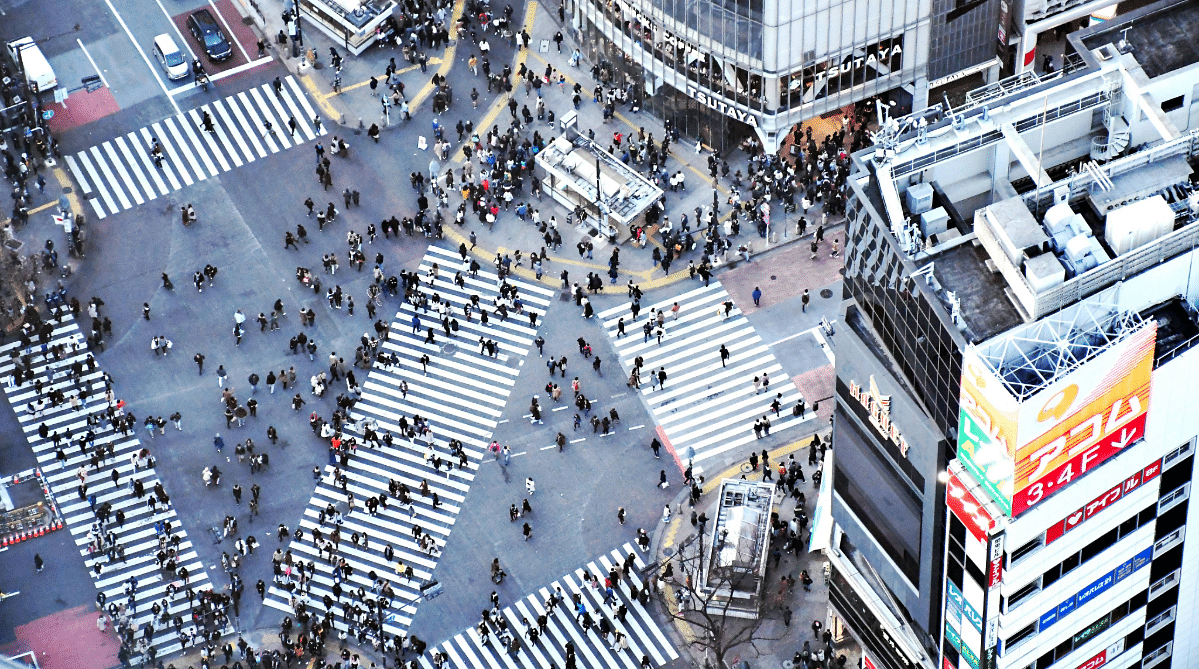 Unsplash
Unsplash
Day 1: Welcome to Tokyo
Fly into either Narita International Airport (NRT) or Haneda Airport (HND) when flying internationally. Take it easy on your first day to acclimate and manage jet lag. Talk to your hotel concierge or staffers to find the best local eateries, and experience Tokyo like those who live there by sampling local cuisine. Take time to walk around the area near your lodging to see everything nearby.
We suggest going back to your hotel and settling in for bed around the time you would usually fall asleep. Even if you're still operating in a different time zone than Tokyo's, it's best to try to adjust as soon as possible so you're not exhausted during the rest of your trip.
Day 2: Explore Tokyo
Start your day by going to the top of the Tokyo Skytree for spectacular views from the 360-degree observation deck. See the city below all the way to Mount Fuji.
Your next stop is Harajuku. This is an area within Tokyo that's known for dressing up and dressing to be seen. After people-watching, head to Akihabara for more anime-inspired venues. Here you'll find an abundance of shops focusing on anime, comics, and their related characters.
Go to Shibuya, which is similar to Times Square in New York City. Watch the flow of pedestrians at Shibuya Crossing and stop for a photo with Hachiko, the statue of a famed loyal dog. Rest your feet while dining indoors or al fresco, depending on the weather.
Head over to eastern Tokyo to visit the Sensō-ji Temple through the Kaminarimon Gate. Then, get a feel for the real Tokyo by venturing out into the surrounding older neighborhood of Asakusa.
Find lunch, a snack, or an early dinner at one of the many food vendors in the area and have a picnic in Sumida Park. If visiting during cherry blossom season, it's the perfect place to stop and smell the flowers.
Related: The 20 Best Things To Do in Tokyo
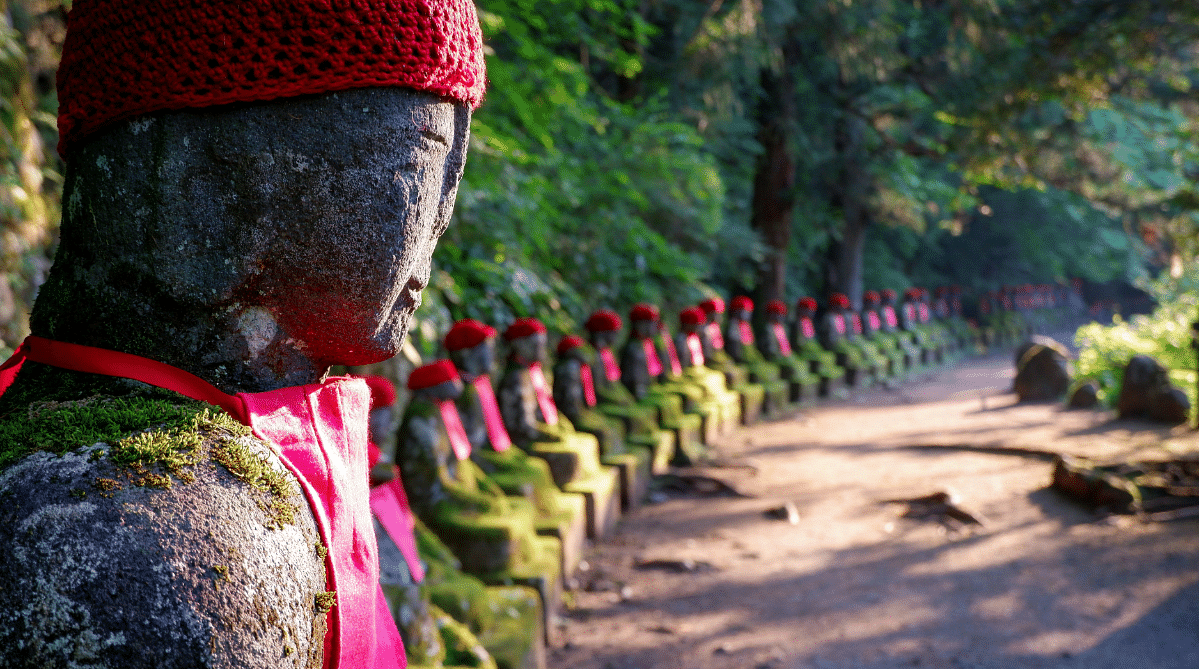 Unsplash
Unsplash
Day 3: Enjoy Nikko
After spending the day in Tokyo, take the train to Nikko for a nature-infused change of pace. This small town lies in the mountains and is a great escape for tourists looking to walk throughout the area.
Traverse the Shinkyo Bridge and view the river below. Next, climb the hill to see the Tōshō-gū shrine. From there, walk along the Kanmangafuchi trail, where dozens of stone Buddhas protecting travelers and children line the path. Nikko is filled with several UNESCO World Heritage Sites, which makes it an ideal place to take a guided tour to fully immerse yourself in its history.
 Unsplash
Unsplash
Day 4: Visit Hakone
Hakone is your gateway to Mount Fuji. Here, you can decide whether to take the Hakone Tozan Cable Car to the top or make the ascent on your own. Your decision will depend on your physical ability, the weather, and your itinerary. If you have the time, a climb will take between five and 10 hours. Of course, choosing to climb Mount Fuji will likely alter the rest of your itinerary. Otherwise, you can take the cable car and see the sights in one day.
Take the Hakone Ropeway to see the Owakudani or the Great Boiling Valley, where volcanic activity has caused hydrogen sulfide to rise from the ground. Cap the night with a dip into an onsen, or traditional Japanese hot spring, for a one-of-a-kind experience.
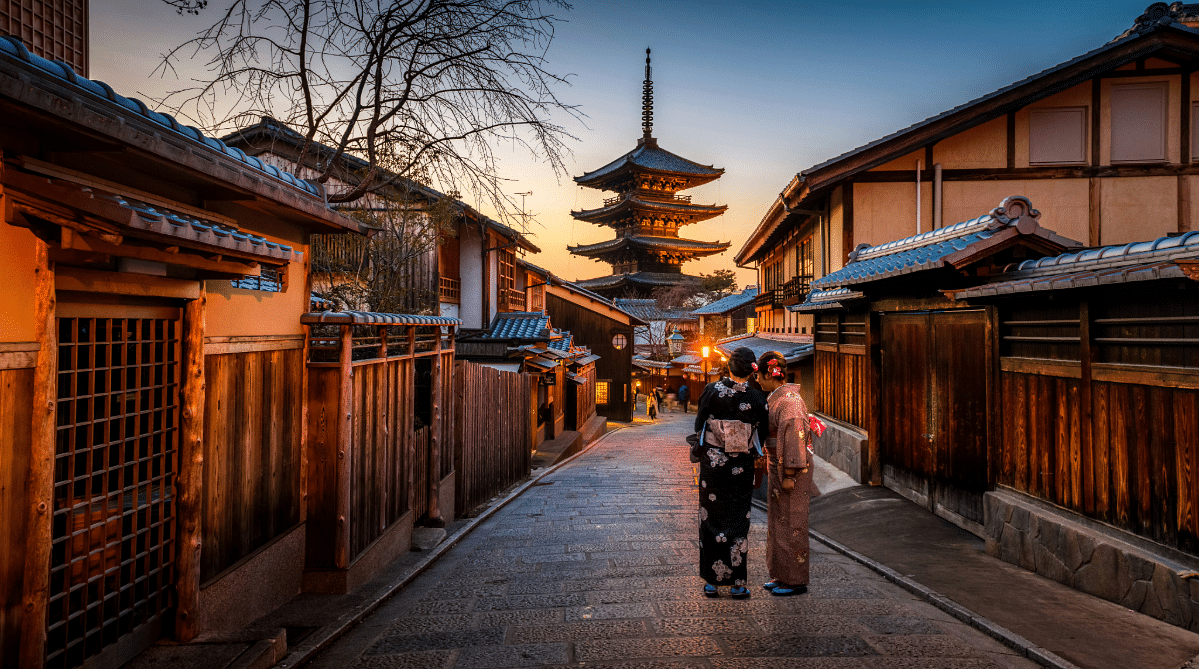 Unsplash
Unsplash
Day 5: Kyoto, Day 1
Take the bullet train to Kyoto, then use the local bus system to navigate the city while you're there. Upon arriving in Kyoto, you should begin at Abeno Harukas, where you'll find amazing views from the top of this 300-meter-high skyscraper. Visit the museum and stay for a bite in one of the many restaurants below.
Spend the afternoon at the Kyoto Aquarium. Experience the visual beauty of a seemingly endless variety of ethereal jellyfish. You'll learn about creatures native to the area that you may have never seen before. There are dolphins, penguins, and a giant salamander to behold.
In the evening, take another trip to the sky at the Tsutenkaku Tower. Arrive just before sunset to take in the magnificent view. Afterward, stroll through the surrounding rose garden and along the nearby Tosabori and Dojima Rivers. End the day by walking along the Nishiki Market. You'll find an array of food that ranges from familiar to unique dishes that you simply must try.
Day 6: Kyoto, Day 2
Start the day by grabbing a coffee and breakfast for a quiet walk through the Tenryū-ji Shrine. Take in the scenic beauty and Zen garden with Japanese wisteria before walking to the Arashiyama Bamboo Grove and Forest. The latter will take about an hour, but you can extend the time by stopping on one of the many benches throughout the area. Take plenty of photos and a few moments for a calming experience.
Visit the Fushimi Inari Shrine, where you'll come across several red torii gates that are believed to cleanse your soul as you walk under them. Your next stop is at the stunning Kinkaku-ji or Golden Pavilion, which began as a home for shoguns and was converted into a sacred temple. Behold the golden facade and spend some time walking the grounds. End the day with a traditional Japanese meal.
Day 7: Spend the Day in Nara
If you need some animal interaction, you've come to the right place. Enter Nara Park to experience the cute deer that reside here. Feed them crackers from local vendors, and get ready to take some photos.
Put on your walking shoes and venture into Mount Kasuga Primeval Forest to experience a virtually untouched pristine forest. You may happen upon some rare creatures, such as a tree frog, during your walk. Bring a headlamp or flashlight, as the dense canopy can block out the sunlight. Finish the day in Nara by purchasing a Nara Kotsu one-day pass so you can see the main sights while hopping on and off the bus.
Related: The 20 Most Beautiful Places in Japan
 Unsplash
Unsplash
Day 8: Experience Osaka
Everywhere you go in Osaka will be a delight for your culinary senses. There are street vendors where you can stop for any meal and a snack or two in between. The city has a wealth of restaurants and karaoke bars to keep the fun going all day long. Be sure to check out the Cup Noodles Museum Osaka Ikeda. It's a venue that foodies are sure to appreciate.
Visit the Osaka Castle and Shitennō-ji Temple, a spiritual center for the people of Osaka. Next, make a stop along the Dotonbori District, where you'll find a bustling area filled with modern shops. This is worth a visit for the photo opportunities alone, but you'll find some fun stores to visit, too.
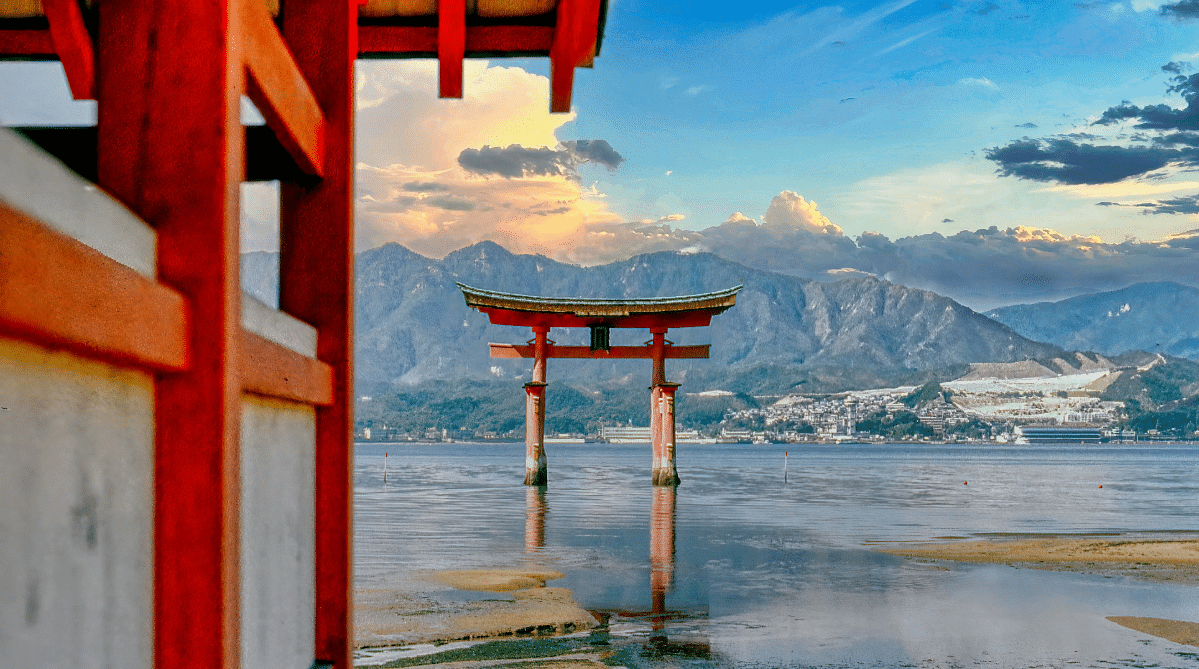 Unsplash
Unsplash
Day 9: Visit Miyajima Island and Hiroshima
No trip to Japan is complete without making a stop in Hiroshima. But first, take a side trip to Miyajima Island. Catch a ferry during high tide to see the massive red torii gate. When the water is high, it looks as though the gate is floating. For a completely different experience, try walking out to the gate during low tide. This island has the unique distinction of never having experienced an earthquake, which means the ancient buildings are original.
Fall is a beautiful time to visit Daishō-in Temple, when it's surrounded by stunning leaves in autumn shades of crimson, fiery orange, and yellow. Walk around the island while making frequent stops to pet the many docile deer that call this place their home.
After leaving Miyajima Island, your next stop is Hiroshima. Here, you'll find a city rich with history and adversity. The city was destroyed in 1945 after an atomic bomb was dropped there. Visit the Genbaku Dome, one of the only buildings still standing after the blast, the Peace Memorial Museum and Park, and the Children's Peace Monument to learn more about the tragedy and pay your respects. Finish the day on a lighter note at Hiroshima Fortress and walk through the manicured and landscaped gardens.
Pick up bento boxes of local cuisine at Okonomimura, conveniently located in the city center, for a portable dinner on the last train back to Tokyo in the evening. The bullet train will get you there in just under four hours, and you can sleep along the way.
 Unsplash
Unsplash
Day 10: Time to Depart
Ending your journey in Tokyo, just as you arrived, is a nice way to finish your adventure in Japan. Depending on the amount of time you have until your flight departs, you can take it easy and see some more sights or have one more meal before you go.
Either way, make sure you connect with the city around you by sampling food from the local vendors at Tsukiji Fish Market. Here, you will find a wide variety of fresh fish dishes. Carve out a little extra time to join the Tsukiji Outer Market Food and Drink Walking Tour. On this informative tour, you'll learn all about the vendors and what they have to offer. Consider it a lesson in culture, history, and what you should order next.
Take the Narita Express to the airport and see a few more sights along the way as it zips by. Plan to arrive at the airport earlier than expected to avoid any unnecessary delays. You can wrap up your visit by people-watching and walking through the airport shops.
Japan eSIM: Stay Connected with Airalo
Stay connected during your trip to Japan with an eSIM from Airalo. An eSIM is a tiny SIM that's embedded in your device and works 100% digitally. You can download an eSIM plan for your destination and instantly connect to a mobile network. There's no need to find a SIM card vendor, manage multiple SIMs, or worry about roaming fees.
Here are just some of the benefits of using an Airalo eSIM:
- Connect to a mobile network within minutes.
- Choose from flexible local, regional, and global data plans.
- Say goodbye to expensive roaming charges.
- Store multiple eSIM data plans on your device.
- Need more data? Top up in the Airalo app.
You're all set for your trip to Japan! Head to the Airalo store to browse eSIMs for Japan and 200+ destinations worldwide.
Updated June 2025

